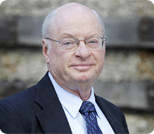Standards of value
Probably no pollster has conducted a survey to find out from the public how frequently they think the purchasing power of the currency should be cut in half. Probably no survey is necessary because we already know the public’s reaction: ‘that is a really silly question.’
Imagine asking the average person on the street, “Do you think the government’s objective should be to cut the value of a US dollar in half in 36 years, 24 years or 18 years.” (The result of inflation rates of 2, 3, and 4 percent, respectively) Of course, most people would reply, “Why would they want to do that at all?” Or, they would simply walk away muttering, “what a thoroughly dumb question.”
The pollster could ask the question another way which amounts to the same thing: “Do you think the government’s objective should be to double the price of everything by 2050? (The result of a 2 percent inflation) “Or do you think the objective should be to double the price of everything by 2038?” (The result of a 3 percent inflation.)
I tried the survey totally unscientifically on my five granddaughters and the responses were unanimous, “Grandpa, that is so totally dumb, why are you even asking?”
The US Constitution says in Article 1, Section 8, Congress shall have power “To coin Money, regulate the Value thereof, and of foreign Coin, and fix the Standard of Weights and Measures; …” Note that the responsibility of Congress in setting the value of the nation’s currency is in the same sentence specifying weights and measures. That is, Congress was to decide whether the new country would measure weights in grams or ounces, distances in kilometers or miles, and money in pounds sterling, pistoles, drachma, pesos, or something else.
At Thomas Jefferson’s recommendation, Congress chose “dollar” as the national unit of account, defined in terms of gold and silver. The intent was to fix the value of a “dollar” the same as fixing weights, volumes and distances. Setting standards for measurements was viewed an appropriate function of government, which included setting a standard of value—the medium of exchange.
Imagine the pollster asking, “In how many years do you think the number of ounces in a quart should be cut from 32 ounces to only 16 ounces?” Or, “In how many years do you think the length of a foot should be cut from 12 inches to only 6 inches?” The questions are so obviously absurd they would never be taken seriously.
So, why does it make sense to anyone when governments and central banks announce they want to accelerate the pace at which they plan to cut the purchasing power of the national currency in half? Why does it make sense to anyone that the government announces they plan to double the price of everything at a faster pace than before? Why does it make any sense to normal people that the value of money can be altered any more than the measures of weights, volumes and distances can be altered?
Money is a standard of value, a unit of account, as well as a medium of exchange. When the purchasing power of money is stable, people see changes in prices of goods, services, and assets as changes in relative prices—and they choose to buy more or less. When the purchasing power of money is stable, people view changes in interest rates as changes in “real” interest rates, not contaminated by changing expectations about the future purchasing power of money. Investment funds are then allocated to their best uses, and the pace of economic growth is maximized. The introduction of uncertainty about future purchasing power of money necessarily results in “mal-investment;” resources are wasted on what turn out to be bad investment decisions.
Central banks would serve us better if they heeded the wisdom of my teenage granddaughters—planning to shrink the purchasing power of the nation’s currency is a dumb idea.









